15 Plants That Can Grow in Sand (With Pictures)
-
- Last updated:
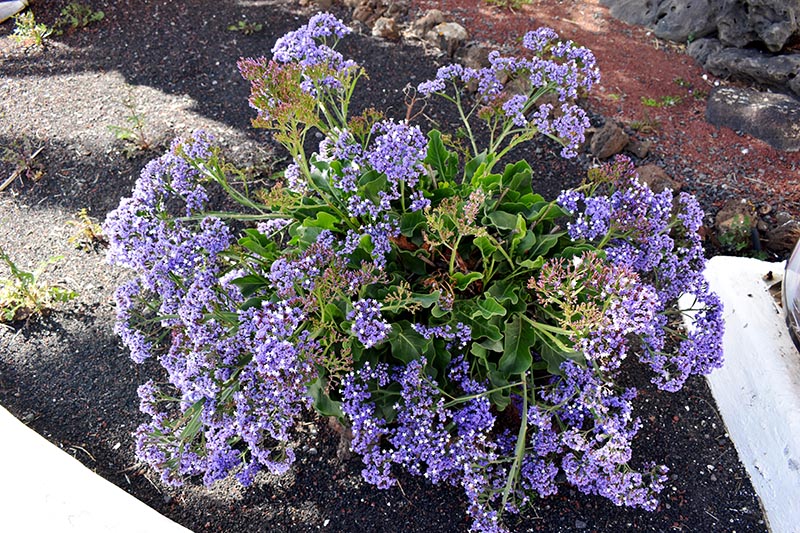
It is a common misconception that plants can only thrive in soil rich in nutrients. This is perhaps why gardeners who live in sandy areas go to great lengths to amend their sandy garden soil with organic matter to create a more suitable environment for a variety of their plants.
However, a variety of plant species can grow in sandy soil, but with a little more effort than it would in typical loam garden soil. If you live in a particularly sandy area, you might want to look for plants that thrive in sandy conditions. These plants should be deeply rooted and do not require frequent watering.
In this article, we have highlighted 15 plants, including herbs, trees, groundcovers, and perennials, that you can easily grow in the sandy areas of your yard without too much effort.
The different plants that grow in sand:

4 Herbs That Thrive in Sandy Soil
1. Thyme (Thymus vulgaris)
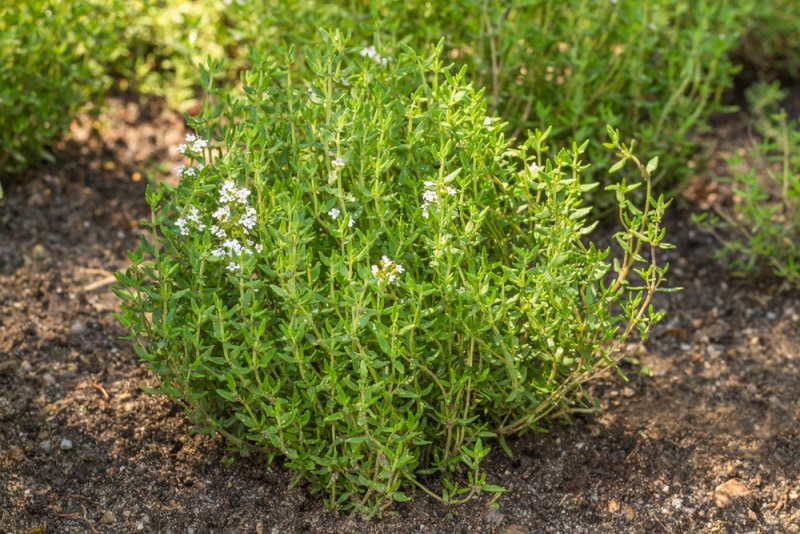
| USDA Hardiness Zones: | 5–9 |
| Average Height: | 8 inches |
Thyme is a popular garden herb that thrives in slightly acidic soil with excellent drainage. This herb requires exposure to full sunlight conditions. It also performs best in sandy and rocky soils. It requires little to no effort to propagate the plant from a young shoot to a fully mature plant.
2. Rosemary (Salvia rosmarinus)
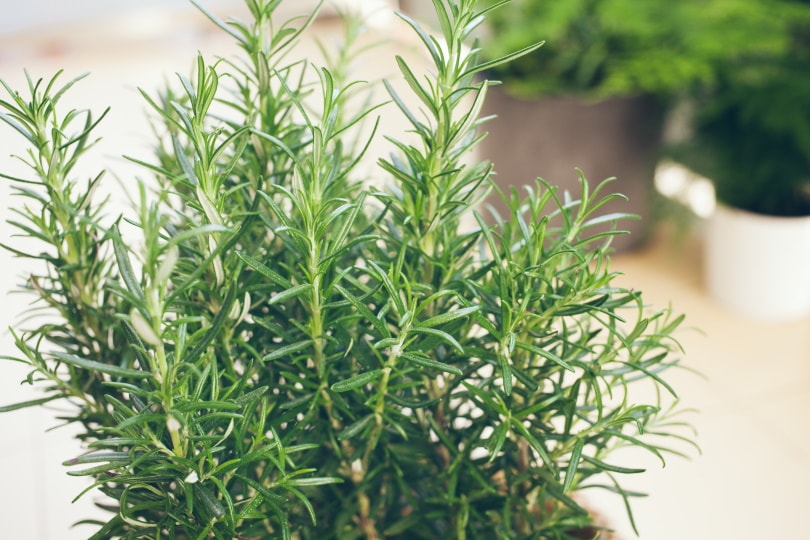
| USDA Hardiness Zones: | 8–10 |
| Average Height: | 3.3 feet |
Rosemary does well in full sunlight exposure, acidic conditions, and a well-draining growing medium, making it an ideal plant to grow in sandy soils. It doesn’t require frequent watering once the roots have taken hold of the sand.
Furthermore, unlike other plant species, rosemary blooms in late winter, filling your garden with aroma and color all year round. Irene and Lock de Forest rosemary varieties are the best plants to provide ground cover in your yard if you live in a sandy area.
3. Oregano (Origanum vulgare)

| USDA Hardiness Zones: | 8–10 |
| Average Height: | 1 to 2 feet |
Similar to thyme and rosemary, oregano is a popular herb in most home gardens. This herb also prefers well-draining soils with some slight acidity that sandy soils provide. Most oregano varieties require the full glare of the sun.
However, the oregano species with variegated or golden foliage may require some shading in the afternoon when it is hot since these species are more sensitive to direct sun exposure.
4. Bee Balm (Monarda didyma)
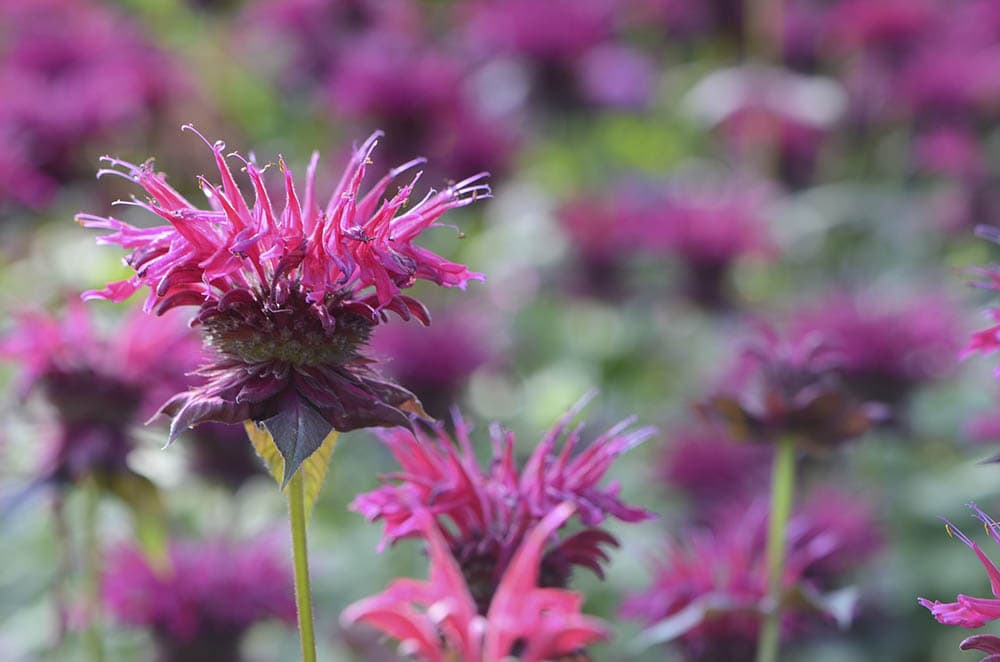
| USDA Hardiness Zones: | 3–9 |
| Average Height: | 3–4 feet |
Most people may consider the bee balm as an ornamental plant due to its tubular flower heads; however, it is also an herb that can treat bee stings and make tea.
For this plant to thrive, you shouldn’t grow it in an area with heavy foot traffic because it attracts bees. Nevertheless, it features a minty smell that repels deer.
The bee balm can grow in beach sand and can withstand extreme heat conditions, making it ideal for the rough and salty conditions of the beach.
4 Trees That Grow Well in Sand
5. Eucalyptus (Eucalyptus globulus)
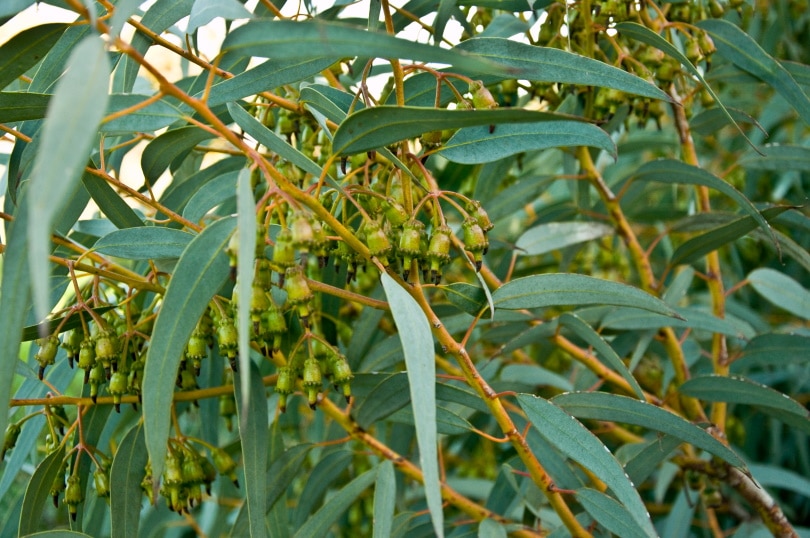
| USDA Hardiness Zones: | 8–11 |
| Average Height: | 33–197 feet |
Eucalyptus trees are native to Australia, a continent well known for its sandy conditions. Even though there are several species of the eucalyptus tree, all of them are fast-growing and thrive in shaded conditions.
Most of the species can grow to a height of up to 150 feet. These evergreen trees have leaves that produce a minty fragrance that can transform your yard, especially after being blown by a gentle breeze.
6. Silk Tree (Albizia julibrissin)

| USDA Hardiness Zones: | 6–9 |
| Average Height: | 20–25 feet |
The silk tree is also referred to as the mimosa tree, generally a fast-growing deciduous tree. It takes about five to seven years to fully mature, reaching heights of up to 30 feet.
The mimosa tree is beloved by gardeners because it has a lot of personality, especially in spring when it can transform your yard with blooms of vivid yellow and pink colors.
As a deciduous tree, it thrives in well-draining soil, a characteristic of sandy mediums. It also doesn’t require frequent watering.
7. Black Locust (Robinia pseudoacacia)
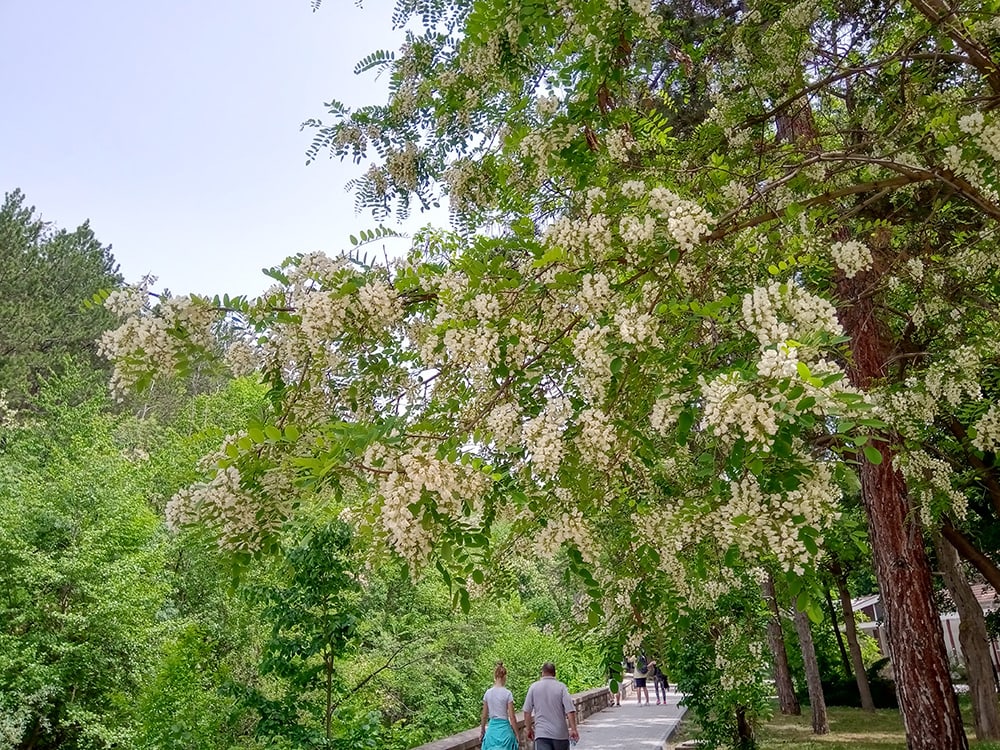
| USDA Hardiness Zones: | 3–8 |
| Average Height: | 80 feet |
This popular ornamental tree tends to thrive in sandy growing mediums. It is a fast-growing tree species, but sometimes it may have unappealing bare branches. However, during spring, the tree sprouts white flower clusters that can fill your yard with a sweet aroma.
Later in fall, the Black locust produces finely cut foliage and long decorative seed pods that spiral in a light breeze.
8. Pin Oaks (Quercus palustris)
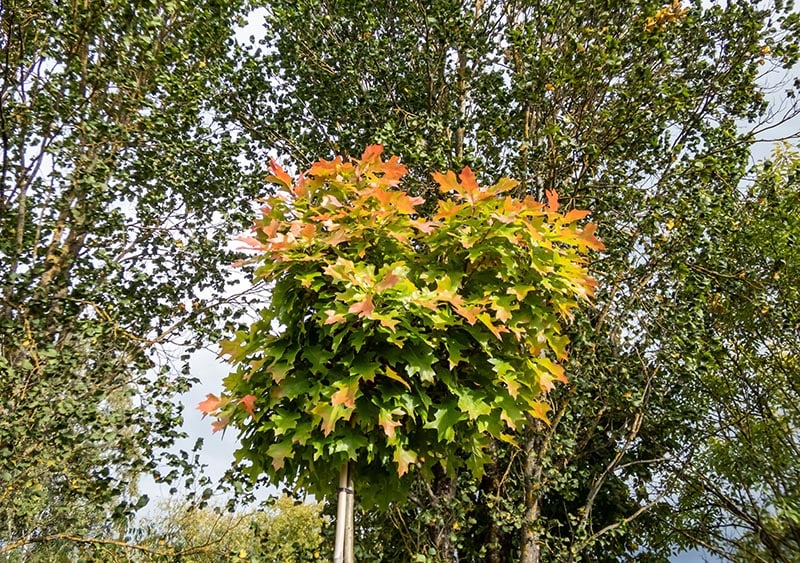
| USDA Hardiness Zones: | 4–8 |
| Average Height: | 60–70 feet |
Most oak tree species that enjoy sunny conditions can also thrive on sandy beaches. They are salt-tolerant, making them ideal plants to grow on your beachfront property.
Pin oaks can reach incredibly high heights, featuring 5-inch-long leaves, which are multi-lobed and glossy green most of the time. However, they take on deep-red foliage in fall, adding a variety of colors to your yard.
These trees are ideal for furnishing shade.
7 Groundcovers and Perennials That Thrive in Sandy Soil
9. Oregon Stonecrop (Sedum oreganum)
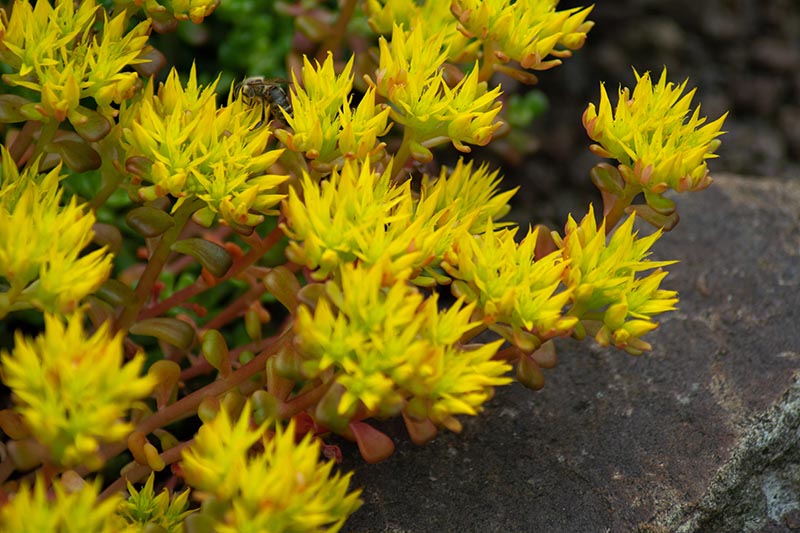
| USDA Hardiness Zones: | 5–9 |
| Average Height: | 2–6 inches |
The oregano stonecrop is a type of groundcover plant species that does well in varying growing conditions. As a hardy and drought-resistant plant, it is suitable for sandy growing mediums because it doesn’t require frequent watering regimens.
This groundcover thrives best in both partial and full sun conditions and blooms to produce yellow star-shaped flowers. It is a useful tree to grow in your yard because it attracts bees, butterflies, and other pollinators.
10. Lance Leaf Coreopsis (Coreopsis lanceolata)

| USDA Hardiness Zones: | 7–10 |
| Average Height: | 12–24 inches |
Lance leaf is a subspecies of coreopsis plant and can virtually grow in any medium or environmental conditions. It enjoys full sun exposure and thrives, whether planted in pure sand or heavy clay soil. As an evergreen perennial plant, it provides beautiful ground cover on sandy patches and can even be invasive when left to its own devices.
Furthermore, when it blooms, it produces beautiful single bright yellow stalks that can reach heights of up to 3 feet tall. Its flowers are almost similar to those of daisies.
11. Purple Coneflower (Echinacea purpurea)
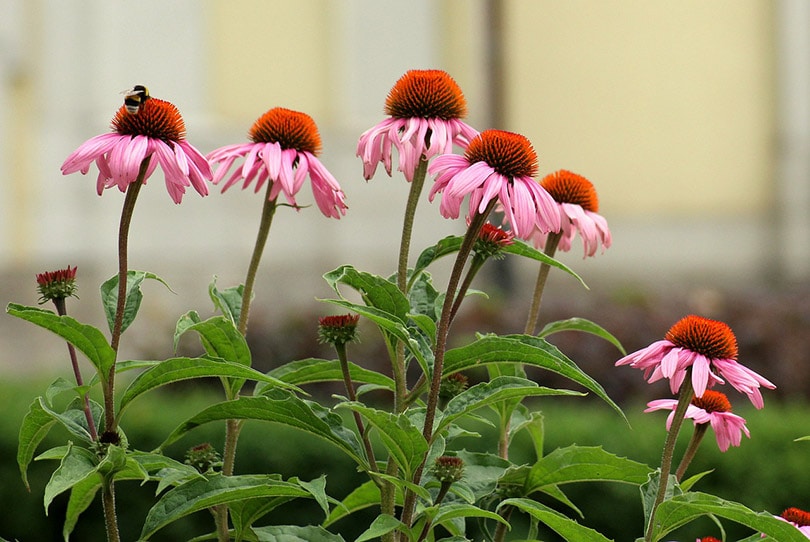
| USDA Hardiness Zones: | 7–10 |
| Average Height: | 2–4 inches |
The purple coneflower is another attractive plant species that can increase the aesthetic appeal of your yard with its purple flowers. It is native to the southeastern and mid-western United States and typically thrives in areas with sandy mediums that are well-draining.
This plant thrives in full sunlight exposure and spreads well on the ground. It blooms in spring, each stalk containing a center with an explosion of yellow, orange, or even brown florets.
The flowers on these plants tend to be bright enough to attract butterflies and bees, which are beneficial pollinators.
12. Lavender (Lavandula angustifolia)
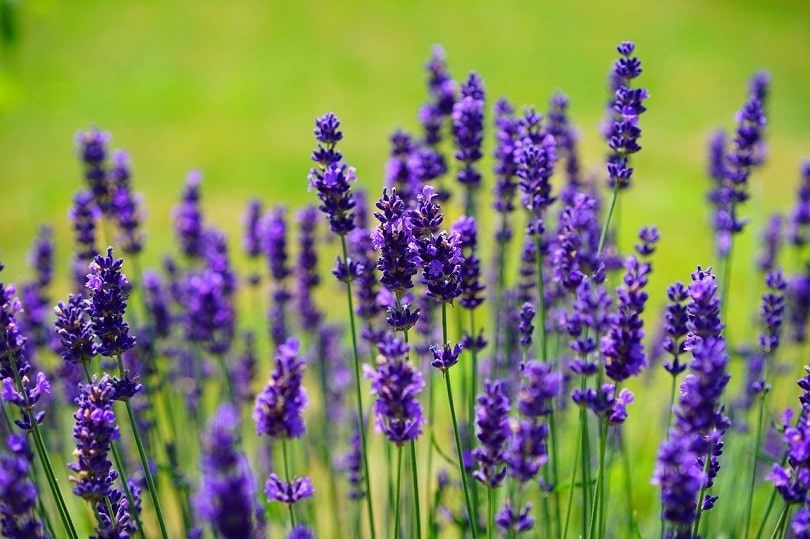
| USDA Hardiness Zones: | 6–9 |
| Average Height: | 20–24 inches |
Lavender is particularly a drought-resistant plant that does well in sandy well-draining soils. Not only that, it produces a lovely smell that your household members will appreciate, and which attracts beneficial pollinators like butterflies and bees and repels deer.
Furthermore, Lavenders are suitable for sandy growing mediums because they don’t require a lot of nutrients to grow, and they enjoy the heat associated with sandy soils.
13. Winterberry Holly (Ilex verticillata)

| USDA Hardiness Zones: | 3–9 |
| Average Height: | 18–24 inches |
Winterberry holly is a type of shrub that can significantly improve the aesthetic appeal of your yard’s landscape design. The shrub can add visual interest to your yard longer than typical flowers would have in a year.
Despite its name, the winterberry holly is especially more stunning in the cold climates of autumn when its red berries and green foliage look the brightest. Then comes winter, the berries shrivel up because of extreme cold conditions. But you can improve berry production by placing the shrub in full sunlight exposure.
This shrub is also suitable for salty areas like the beach because its versatility allows it to grow in just about any growing conditions. However, despite its beauty, this shrub is toxic to humans and pets.
14. Lamb’s Ears (Stachys byzantina)
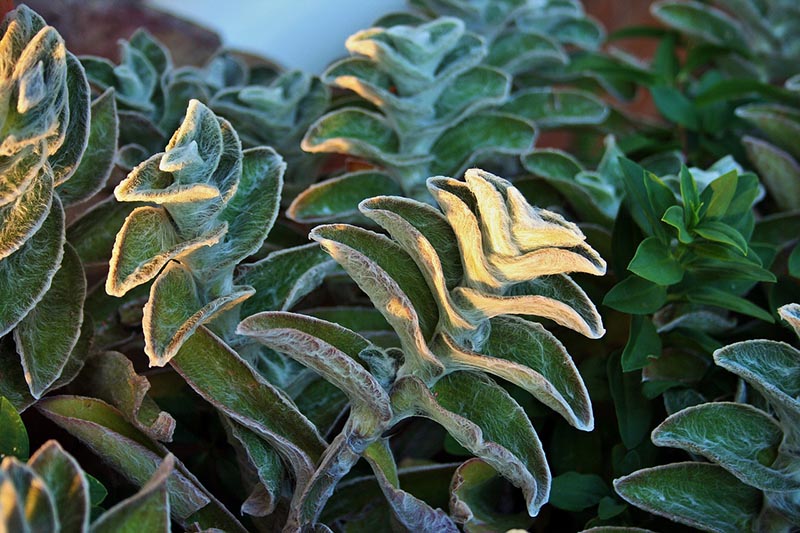
| USDA Hardiness Zones: | 4-8 |
| Average Height: | 6-8 inches |
As the name suggests, this plant tends to feel delicate and soft, like a lamb’s ear. But despite its appearance, it is a very hardy plant, capable of growing in high-heat desert conditions such as sandy mediums.
Besides being fast growers, lamb’s ears tend to form compact mounds that can reach up to 8 inches tall during the flowering season.
This plant features silver-green leaves that can easily get wilted when not watered. However, they are well adapted, giving the plant’s root enough time to absorb the water that trickles through into the sand before draining away.
15. Daylilies (Hemerocallis spp)
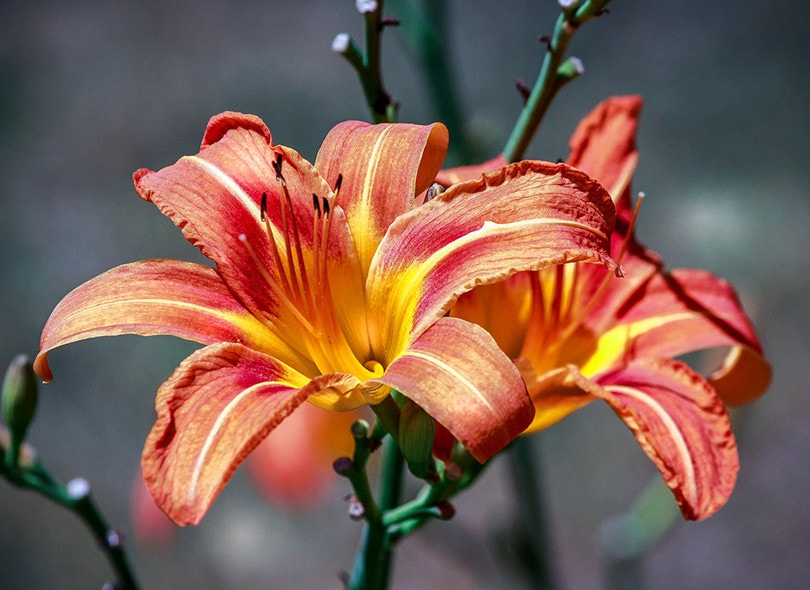
| USDA Hardiness Zones: | 3–10 |
| Average Height: | 1–3 feet |
Daylilies can grow on beach sand because of their salt-tolerant nature. They can also tolerate heavy clay and light sandy soil and thrive during floods and droughts. You can notice daylilies growing in abundance next to roadsides and even in areas they weren’t meant to be planted because their clumps usually spread so rapidly.
The most common daylily variety is the yellow Stella D’oro, which is a reliable perennial variety that thrives under full sunlight exposure. The other daylily varieties feature purple, orange, red, and pink hues ranging from patterns to solid-colored stamens. They can even have more than three colors in their blooms at a time.

Why Do Some Plants Grow in Sand While Some Don’t?
Several plant species may not perform optimally in sandy soils due to their poor water and nutrient retention.
In a nutshell, when the soil has a high sand content in its composition, the more likely it is that the nutrients will be washed out by rain. Using this logic, plants that thrive in the sand are those capable of quickly absorbing water and nutrients in quantities that are enough to promote growth. They should also be able to retain water and nutrients for a considerable time.
This characteristic is particularly common in plants that grow in dry areas and have a high-water retention capacity.
- Spine leaves that prevent evaporation since their thin surfaces don’t lose water as fast as their broad-leaved counterparts.
- Deep and strong roots that can support the plants in case of strong winds.
On the other hand, sand may not be an ideal growing medium for some plants because many sand grains, especially those from a weathered bedrock contain fragments of quartz, which are acidic. Sand with shell fragments is also alkaline, especially along beaches. Hence, some plants may not grow in sandy mediums due to their sensitivity to alkaline and acidic conditions.
Also, since sand is a loose soil medium, it doesn’t offer plants a strong grip for the roots to hold on to.
Lastly, some plant varieties cannot grow in the sand because they need nutrient-rich soil conditions, which are lacking in the sand.
The Best Type of Sand for Your Plants
If you want to grow any of the plants we have offered on our list on a sandy medium, the best kind is horticultural sand, which drains better than other sandy growing mediums.
Horticultural sand has the best drainage properties because its composition consists of sandstone or granite. Yet, what gives this sand an edge over other sand mediums is the fact that it is made up of larger particles more than clay but still finer and smaller than regular sand like the one found on beaches.
But generally, sand as a growing medium has its own pros and cons.
- Easier to till and dig in the sand than other growing mediums
- Patches with sand tend to warm up faster in spring
- Due to their excellent drainage, you limit the likelihood of over-watering your plants
- Sand supports the spread of the plant’s root system
- Sand is an easy-growing medium to add organic matter and fertilizer to
- Sand has poorer water and nutrient retention
- Sand is likely to be affected by severe temperature changes
- Only specific fertilizers work with sand
- Your planting options are limited

Conclusion
Gardeners are particularly curious to know which plant species they can grow in sandy areas. This is because sandy growing mediums tend to be hydrophobic with fewer nutrients to promote the growth of plants growing in them.
But we still have several herbs, trees, and groundcovers that can grow in sandy soil. We hope the information provided above will help you understand the characteristics of plants growing in a sandy area and which plant species you should opt for. Have fun gardening!
Featured Image Credit: Burning Bright, Shutterstock
Contents

